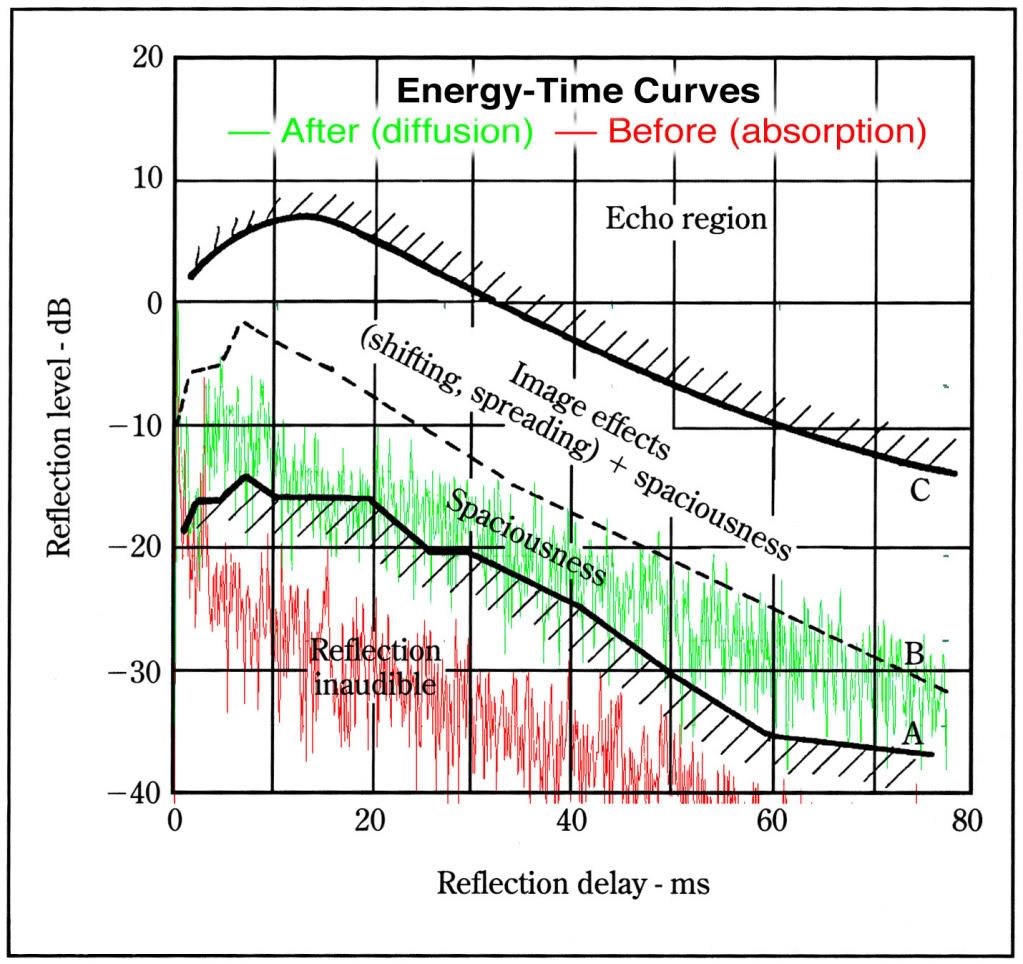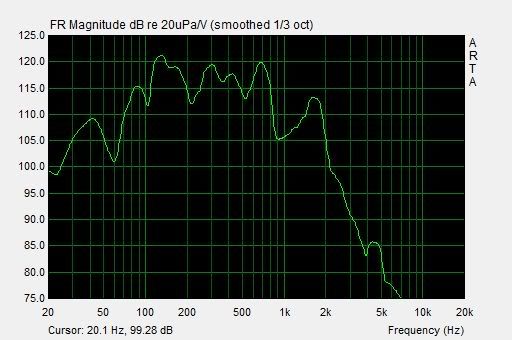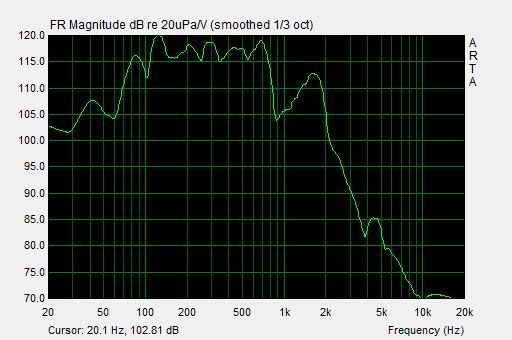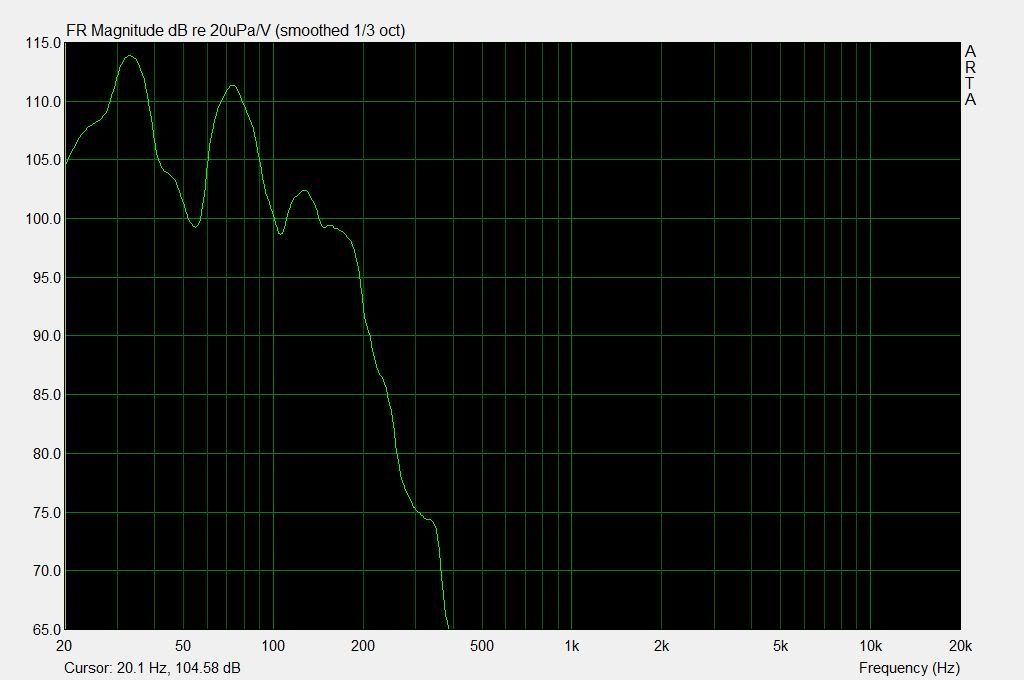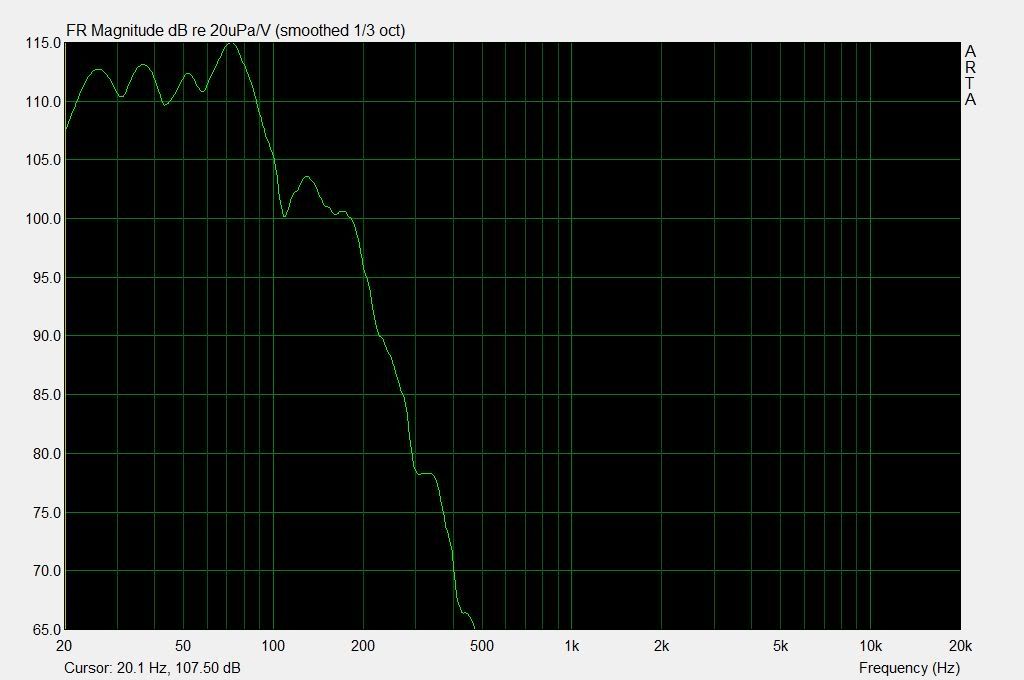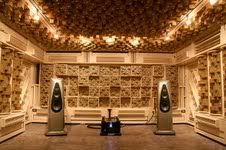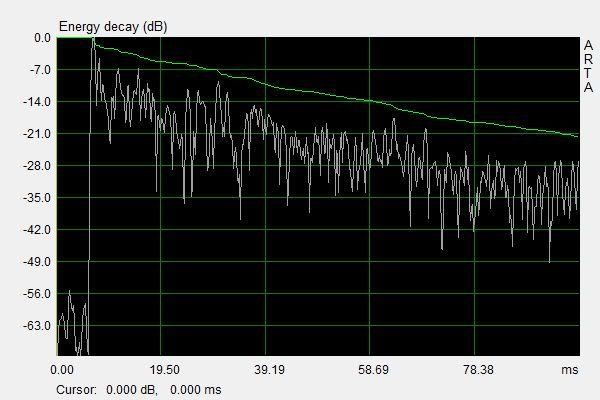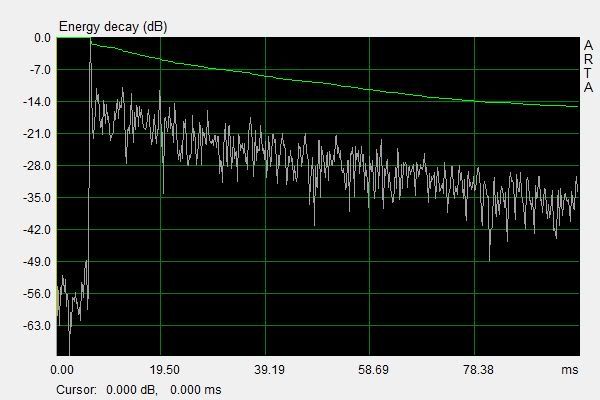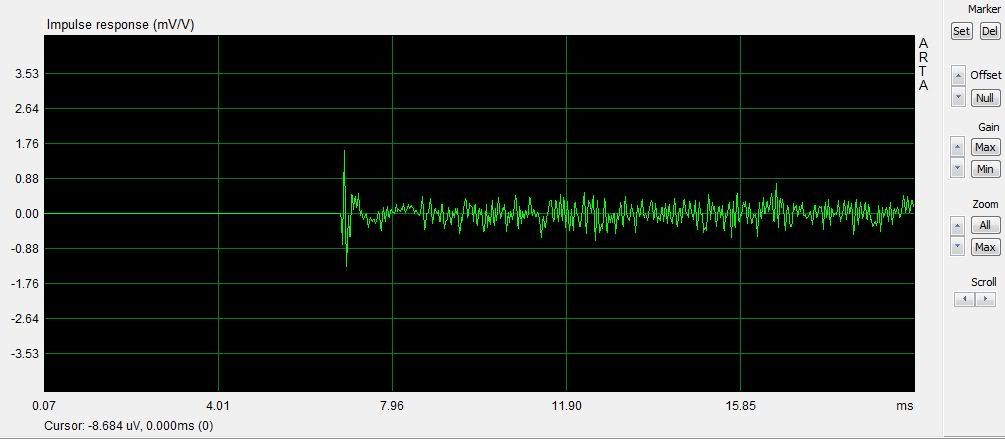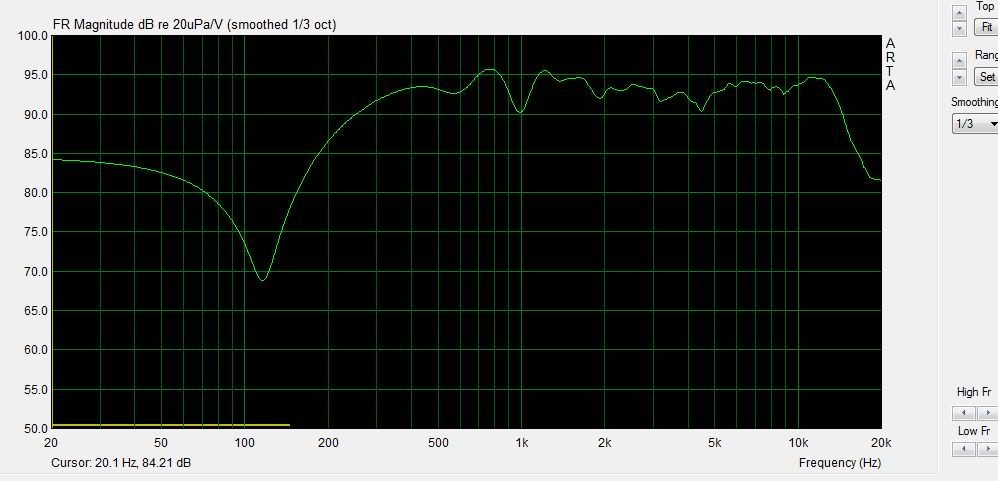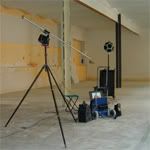[quote
That makes sense. But - do you think that omni speakers are a requirement in order to satisfy your acoustic philosophy?
[/quote]
Hi Mr-T
If the speaker have even powerrespons and you treat all first reflection points with my modules ,you have captured enough early reflections for a very musical listening experients .
Although omnidirectional speakers will activate a Level 3 room more even and give around 3- 5 dB higher energy the first 5-15ms
Svanå Acoustics take advantage of the processing time in the hearingsystem I call it "The Musicalshop" with a opening time until around 30 ms
After the Musicalshop is closed its very important that the listening rooms reflections are lower then in the recording room
If you wait until 15-20ms to treat the reflections you get problems :
time and frequence unmasking effect will decrease
create a fatiguing (sometimes harsch) transient sound
hard to fullfill the important criteria that the reflections in the listening room must be lower in level then in the recording room
A good example is on page 437 Masterhandbook ,4 edition
C-room Mastersound Astoria
After 60 ms the C-rooms reflections is only around 18dB down
Compare that with Svanå acoustics, 60ms = 25dB down
Reading Linkwitz conclusions 2007 was very inspiring and spot on what all music lovers including myself led me to
.
. Reflections generated by the two loudspeakers should be delayed copies of the direct sound to the listener. The delay should be greater than 6 ms. The high frequency content of the reflections should not be intentionally attenuated.
"The high frequency content of the reflections should not be intentionally attenuated. Under these conditions the direct sound from the loudspeakers dominates perceptually.
The room interferes minimally with the spatial, temporal and timbral cues embedded in the direct sound and with the creation of a phantom sound stage between and behind the loudspeakers.
.
Under these conditions the cognitive faculty of the brain is better able to separate the static listening room acoustics from the acoustics embedded in therecording which are presented dynamically by the two loudspeakers".
Taking the ISD gap to 5-6 ms , I got the same comments during the last 15 years
Recently from a world famous "first call" mixer Lasse Marten
"Like most engineers I spend a lot of time on my mixes to make them
sound vivid and exciting, I also spend a lot of money on fancy
speakers and great equipment.
With this in mind, working in a dead room where the acoustic treatment
is there to absorb and kill the very sound I work so hard to get,
makes absolutely no sense to me.
I had the pleasure of having Matts Odemalm from SMT involved when I was
building my mix room at Decibel Studios in Stockholm.
I have very specific demands when it comes to acoustics so I explained
my vision of this room to Matts and Johan from acoustic architects Audio Data Lab and they nailed it.
They made my small room sound much bigger and full of life with
unparalleled imaging.
I'm not a theoretical kind of guy but I know a well designed room when I
hear it and this one is well designed.
Not only is it fun to mix in but my mixes also translates flawlessly
to other systems.
I've been working in some of the finest control rooms in the world and
most of them are built using the classic but obsolete LEDE design, even if
these rooms have a frequency response that is flat like a
ruler I think they have a tendency to suck the life out of the music.
This is not the case in the SMT rooms I've been in, they will instead
enhance every note.
Needless to say I'm very happy, so happy I am now building another control room together with SMT and ADL.
/Lasse Mårten, Mixer/Engineer
(Lykke Li, PBJ, Pink, Backstreet Boys, Johnossi)
The unique green graph comes from Thomas Wing room with a GH ceiling His request was that the vinyls and cds must be seen in the room or else he was musicallity lost (he compared it with a library without books ;D ) The only person I can compare Thomas music intrest with is Michael Fremer, so its was a evening to remember when Thomas invited Fremer to his listening roomearlier this year Fremer comments his visit in Sweden in Stereophile july nr
Thomas comments going from absorbing to Svanå Acoustics :
"From music in a normal living room (slanting roof) to a garage, that was turned into a music room.
The dream of a highly qualified music room is within reach
I practice and enjoy active music listening. Baroque style, classical and jazz. Active listening means
full concentration on whats being played and how, alternative interpretations, observing differen-
ces and creative patterns.
Technically qualified recordings and reproductions of course add value to the joy. As a consumer
of reproductions I have to do my part in preparing relevant conditions, to come as far as possible in
this respect.
Previous, insufficient and inadequate acoustics
Over the years I have made significant investments in music, and in playback hifi-products and
-systems. The final step in the old order was taken when a living room was covered with absorbing
elements on the walls and in the ceiling, all provided by distinguished and recognized acousticians.
The idea was to muffle and soften, to deaden signal peaks.
During these years I had a dream: Being able to listen to chamber music in my home with a sound
acoustic similar to the concert hall, and to baroque organ music with an acoustic similar to the
church room
However, I came to the conclusion that it would not be possible to get the genuine reproduction
qualities I was hoping for. Those levels of acoustics obviously were not within reach in my home.
Real acoustics. The dream comes true
One day I was introduced to Matts Odemalm, Svanå. He was convinced that he could help me, and
presented me with a completely different kind of acoustics.
We found that the only part of the house that would meet all formal conditons and requirements
was my garage. So he said Lets transform your garage to the music room you are dreaming about. I
will diffuse the sound signals in a systematic way, not absorb them, not reduce them.
And thats precisely what he did. My garage lost its role as family warehouse. It was redesigned and
transformed to a music room, by Matts and two carpenters.
The new music room
The ceiling is now covered by the Svanå Golden Horns. A third of the shelves otherwise containing all
CDs, LPs, Blu-rays etc is (in earheight) occupied with broadband Wing diffusors. Svanå mobile Wing
walls were positioned behind the sweetspot (listeners seats), to capture early (5-15ms) reflections.
Matts has promised to describe in professional terms exactly what he has done, and why, and how it
therefore was possible to get the results I had dreamed and hoped for, whose potential I previously
was completely unaware of.
So, it was possible to reach an acoustic order that would allow music to play completely undis-
turbed, with all its inner dynamics and its original richness, after all. I now have a music room
that responds, performs and delivers music qualities the way I have always dreamed about. It is
furnished and equipped with an MBL system, an omni-directional, multi-channel, high end sound
system, supplied by Audio Concept. The role of the MBL system is of course significant in achieving
these results.
The limited size of my garage is now - through Matts efficient sound arcitechture - unbelievingly
well overshadowed by an acoustic effect that resembles the one of the concert hall.
Friends being musicians and active music lovers confirm that music now played is pure, dynamic and
genuine. Some of them discover timbre in their own instruments they never heard before.
Music comes alive in all dimensions, with space, intimacy, depth, and with
a real-time feeling never experienced before.
There is no way I can describe in detail all the appreciation and gratitude I feel for the acoustic solution that was put in place, and the distinguished music qualities that are generated in the new
music room every day now. It has to be experienced.
Conclusions
It took - after a warm and promising handshake with Matts - two months to get there. It was a challenging/fascinating and fairly logical project, once it became clear and understandable for me what could be achieved. And practically and financially not intimidating. The only sad thing is that it took me so long to understand that the opportunity was there all these years.
I urge every music lover in possession of a garage of normal standard to consider doing the same. An unlimited music richness - hidden in old and new recordings, and acoustically within reach through the Svanå product line - is waiting to be discovered and enjoyed.
Best
Matts
www.diffusor.com



